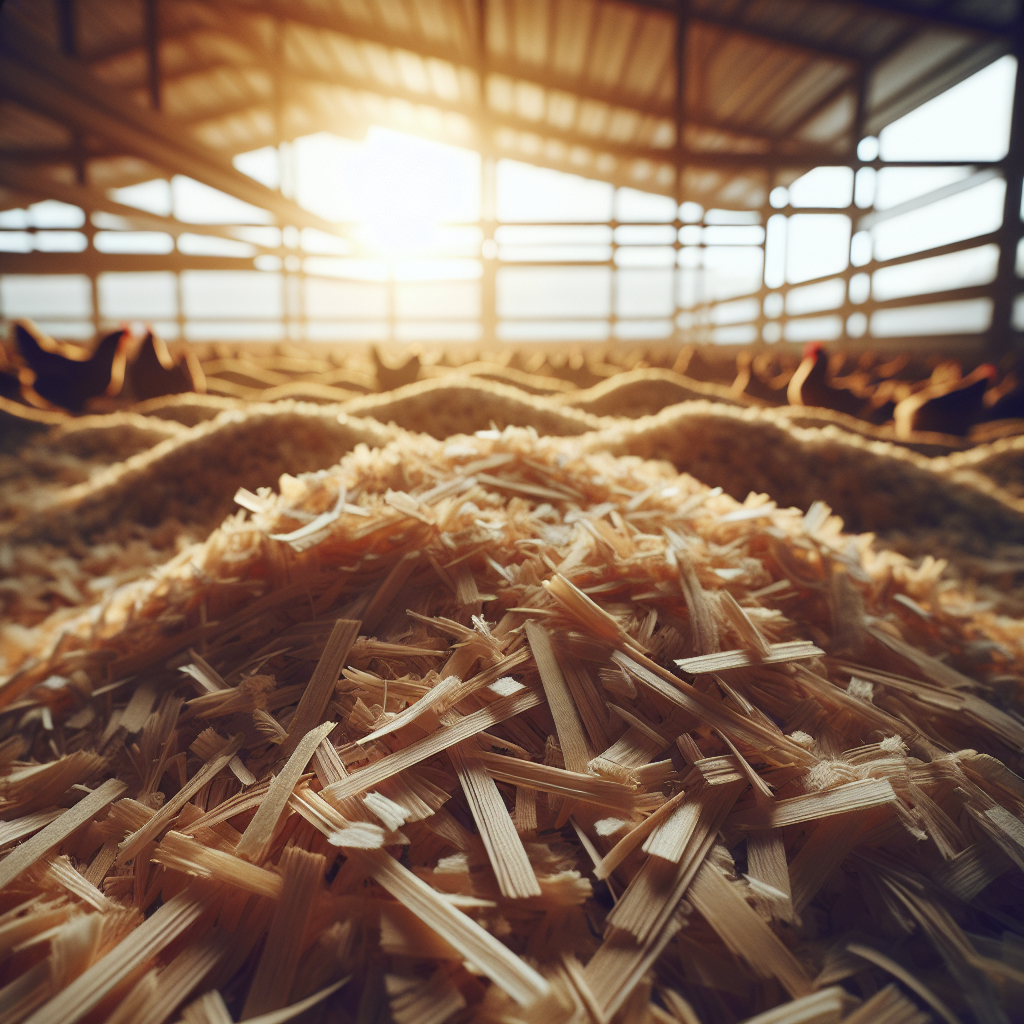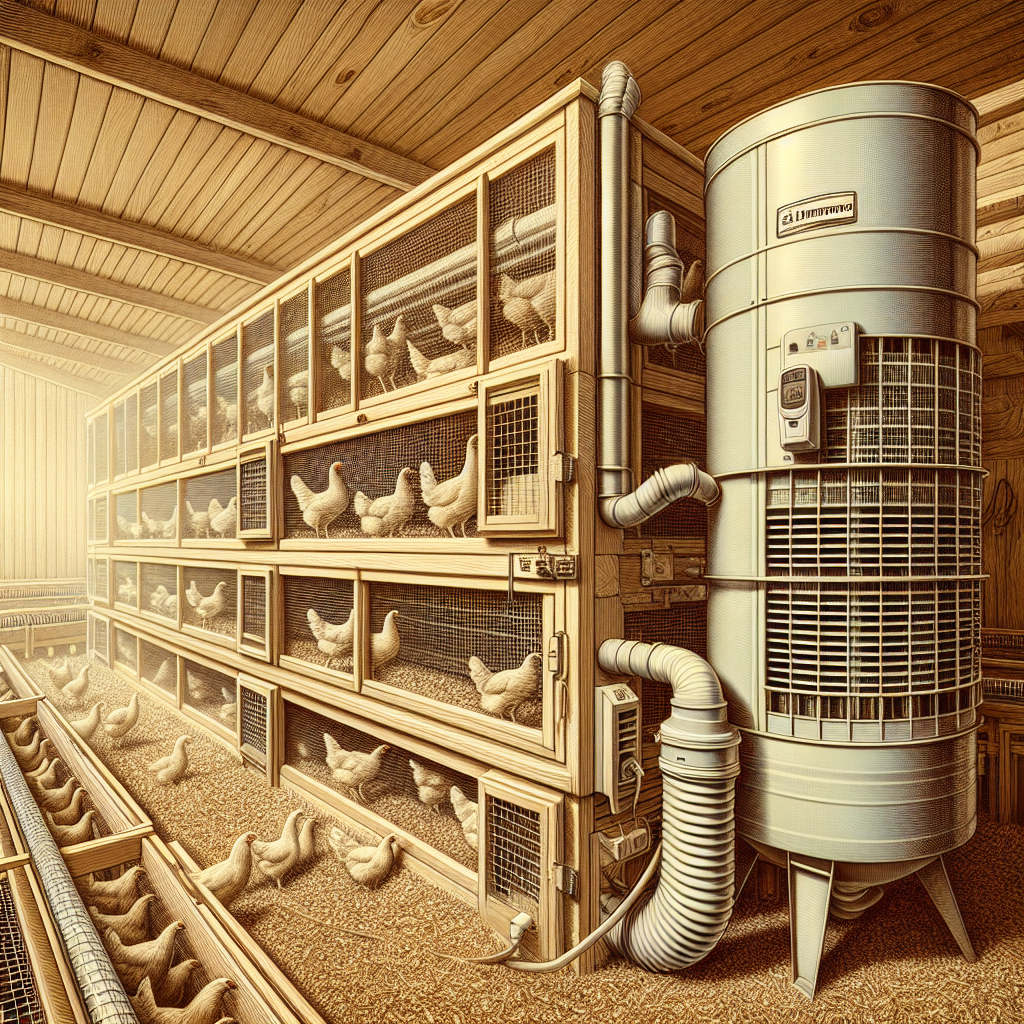Having a clean and healthy environment for your chickens is crucial for their well-being and productivity. But how do you effectively maintain and manage the bedding material in the coop? It’s important to ensure that your chickens have a comfortable and sanitary space to roost and lay eggs. In this article, we will explore some practical tips and strategies to help you keep your coop clean, odor-free, and conducive to your chickens’ health. By implementing these easy steps, you’ll be able to provide the best living conditions for your feathered friends.
Importance of Bedding Material in the Coop
Having the right bedding material in your chicken coop is essential for several reasons. Firstly, it provides insulation and helps regulate the temperature inside the coop, keeping your chickens warm in colder months and cool in hotter months. Secondly, bedding materials help absorb moisture, preventing the buildup of dampness and reducing the risk of bacterial growth and respiratory issues for your flock. Lastly, a good bedding material offers cushioning and comfort, allowing the chickens to rest and sleep comfortably.
Choosing the Right Bedding Material
When it comes to choosing the right bedding material for your chicken coop, there are several options to consider. Each material has its own advantages and disadvantages, so it’s important to choose one that suits your specific needs.
Straw
Straw is a common bedding material that provides excellent insulation and cushioning. It is relatively inexpensive and readily available. However, straw can become compacted over time, making it less effective at moisture absorption. It may also harbor mites or other pests if not properly maintained.
Wood Shavings
Wood shavings are another popular choice for bedding material. They are absorbent, comfortable, and easy to clean. However, make sure to use untreated wood shavings, as chemicals used in some treatments can be harmful to chickens.
Hay
Hay can be a good bedding option, especially if you have a reliable source. It provides warmth and comfort for the chickens. However, it can be prone to mold growth and can be more challenging to keep clean compared to other bedding materials.
Pine Needles
Pine needles are a natural and readily available bedding material. They have a pleasant scent and are known to have antimicrobial properties. However, they are not as absorbent as other options and may require more frequent cleaning.
Newspaper
Newspaper can be used as bedding material, especially for brooders or small growing chicks. It is easy to clean and replace. However, it may not provide sufficient insulation or cushioning for adult chickens.
Sand
Sand is a surprisingly effective bedding option, particularly in areas with excessive moisture. It drains well and prevents dampness, reducing the risk of bacterial growth. However, it can be challenging to clean and may require regular sifting.
Sawdust
Sawdust is another option to consider, especially if you have access to a sawmill or woodworking shop. It is highly absorbent and provides good insulation. However, make sure to use sawdust from untreated wood to avoid any potential harm to your flock.
Proper Bedding Thickness
The thickness of bedding in your chicken coop plays a crucial role in maintaining a healthy environment for your flock. The appropriate bedding thickness depends on several factors, including the season, climate, and the age and size of your chickens.
Considerations for different seasons
During colder months, it is recommended to increase the thickness of bedding to provide additional insulation and warmth. On the other hand, in hotter months, reducing the bedding thickness can help promote better airflow and prevent heat stress.
Calculating the appropriate depth
A general guideline for bedding thickness is around 3 to 4 inches deep. However, this can vary depending on the bedding material used. Some materials, such as sand or wood shavings, may require a deeper layer for optimal moisture absorption.
Monitoring and adjusting
Regularly monitor the condition of your coop bedding to ensure it remains dry and free from odors. If you notice damp spots or an increase in odor, it may be necessary to add additional bedding or replace the existing bedding. Adjusting the thickness as needed will help maintain a clean and comfortable environment for your chickens.
Preventing and Managing Moisture in the Coop
Excessive moisture in the chicken coop can lead to a variety of issues, including bacterial growth, respiratory problems, and an increased risk of parasites. To prevent and manage moisture effectively, consider the following strategies:
Proper coop design and construction
Ensuring proper ventilation and drainage in your coop is essential for preventing moisture buildup. Provide adequate windows, vents, and a well-sealed roof to prevent rainwater from entering the coop. Regularly inspect your coop for any leaks or areas that may contribute to excess moisture.
Regular cleaning and maintenance
Regularly clean your coop to remove droppings and wet bedding, as these can contribute to moisture buildup. Remove soiled bedding promptly and replace it with fresh, dry bedding. Additionally, check for any areas where moisture may be accumulating, such as water spills or leaks from waterers or roof.
Using moisture-absorbent materials
Choosing bedding materials that have high moisture-absorbing properties can help mitigate moisture issues in the coop. Materials like sand, wood shavings, and pine needles are known for their ability to absorb and retain moisture effectively. Regularly monitor the moisture levels in your coop to determine if additional materials or adjustments are needed.
Cleaning and Replacing Bedding
Regular cleaning and replacing of bedding is crucial for maintaining a clean and healthy environment for your chickens. Here are some guidelines to follow:
Regular spot cleaning
Spot clean your coop on a daily basis by removing any wet or soiled bedding. This will help prevent the buildup of odors and bacteria. Replace the soiled bedding with fresh, dry material. Pay extra attention to areas where the chickens spend most of their time, such as roosting bars or nesting boxes.
Deep cleaning methods
Deep cleaning should be done periodically to ensure the coop is thoroughly cleaned. Remove all bedding, droppings, and any debris from the coop. Use a mild detergent or disinfectant to clean the surfaces, making sure to rinse thoroughly. Allow the coop to dry completely before adding fresh bedding.
Determining when to replace bedding
The frequency of bedding replacement will depend on several factors, including the number of chickens, coop size, and the type of bedding used. Generally, bedding should be replaced at least once a month or whenever it becomes excessively soiled or wet. Regularly inspect the condition of the bedding to ensure it remains clean, dry, and odor-free.
Composting Bedding Material
Composting your used chicken coop bedding is an excellent way to reduce waste and create nutrient-rich compost for your garden. Consider the following tips for successful composting:
Benefits of composting
Composting your bedding material has several benefits. It reduces waste, helps control odor, and creates a valuable resource that can be used to enrich the soil in your garden. The composted bedding material is rich in organic matter and nutrients, making it a natural fertilizer for your plants.
Choosing the right composting method
There are various composting methods to choose from, such as traditional compost piles, vermiculture (worm composting), or compost bins. Select a method that suits your space, time, and resources. Make sure to have a proper balance of carbon-based bedding material and nitrogen-rich chicken manure to achieve optimal composting.
Tips for successful composting
Ensure proper moisture levels in your compost pile by regularly turning and watering it. Maintain a temperature range of 120 to 160 degrees Fahrenheit to promote efficient decomposition. Avoid adding any potentially harmful materials, such as diseased plants or invasive weeds, to your compost pile. Regularly monitor the progress of your compost and adjust the conditions as needed for optimal results.
Managing Odor in the Coop
Managing odor in the chicken coop is important for both the well-being of your flock and your own comfort. Here are some strategies to minimize odor:
Proper ventilation
A well-ventilated coop allows for good air circulation, reducing the buildup of ammonia and other odors. Install windows, vents, or fans to promote airflow and remove stagnant air. Ensure proper ventilation without excessive drafts to maintain a comfortable and odor-free environment for your chickens.
Using odor-reducing additives
Some natural additives can help reduce odor in the coop. Using materials like dried herbs, such as mint or lavender, can provide a pleasant scent and help control odors. Sprinkle these additives around the coop or mix them into the bedding material to minimize the smell.
Cleaning and maintaining coop accessories
Regularly clean and maintain coop accessories, such as waterers and feeders, to prevent the accumulation of stale food or water. These can contribute to odors in the coop. Replace bedding in these areas frequently to ensure freshness and minimize any potential for odor buildup.
Dealing with Pests and Parasites
Pests and parasites can pose a significant threat to the health and well-being of your flock. Be vigilant in identifying and managing these potential issues:
Identifying common pests and parasites
Common pests and parasites that may infest the coop include mites, lice, flies, and rodents. Regularly inspect the coop and chickens for any signs of infestation, such as itchy, irritated skin, feather loss, or droppings that indicate the presence of rodents.
Regular coop inspections and cleaning
Perform regular inspections of the coop to identify potential pest entry points or areas where they may hide. Seal any cracks or openings that pests could use to enter. Clean the coop regularly to remove any potential breeding grounds or hiding spots for pests.
Using natural remedies or appropriate treatments
Consider using natural remedies or appropriate treatments to manage pests and parasites. For example, diatomaceous earth can help control mites and lice, while good sanitation practices can prevent fly infestations. Consult with a veterinarian or poultry expert for advice on specific treatments or preventive measures.
Ensuring Biosecurity and Health
Maintaining biosecurity and ensuring your flock’s health is crucial for their overall well-being. Implement the following practices to minimize the risk of diseases and promote a healthy flock:
Quarantine procedures for new bedding material
When introducing new bedding material to your flock, it’s important to follow quarantine procedures to prevent the introduction of diseases or parasites. Keep the new bedding separate from the rest of the flock for a designated period to monitor for any signs of illness or infestation.
Disease prevention tips
Practice good biosecurity measures to prevent the spread of diseases. Simple steps, such as regularly washing your hands before and after handling chickens, disinfecting equipment, and limiting contact with other flocks, can help minimize the risk of disease transmission.
Monitoring flock health
Regularly monitor and assess the health of your flock. Pay attention to changes in behavior, appearance, and egg production. Keep track of any signs of illness or abnormalities and consult with a veterinarian if necessary. Conduct routine health checks and vaccinations to prevent the onset of diseases.
Conclusion
Proper management and maintenance of bedding material in your chicken coop are vital for the health and well-being of your flock. Choose the right bedding material that provides insulation, moisture absorption, and comfort. Monitor and adjust bedding thickness based on seasonal considerations. Regularly clean and replace bedding to prevent moisture buildup and maintain a clean environment. Compost your used bedding material to create nutrient-rich compost for your garden. Implement strategies to manage odor, pests, and parasites. Follow biosecurity measures and prioritize flock health to ensure a thriving and disease-free chicken coop. By effectively managing the bedding material in your coop, you can provide a safe, comfortable, and healthy home for your chickens.




